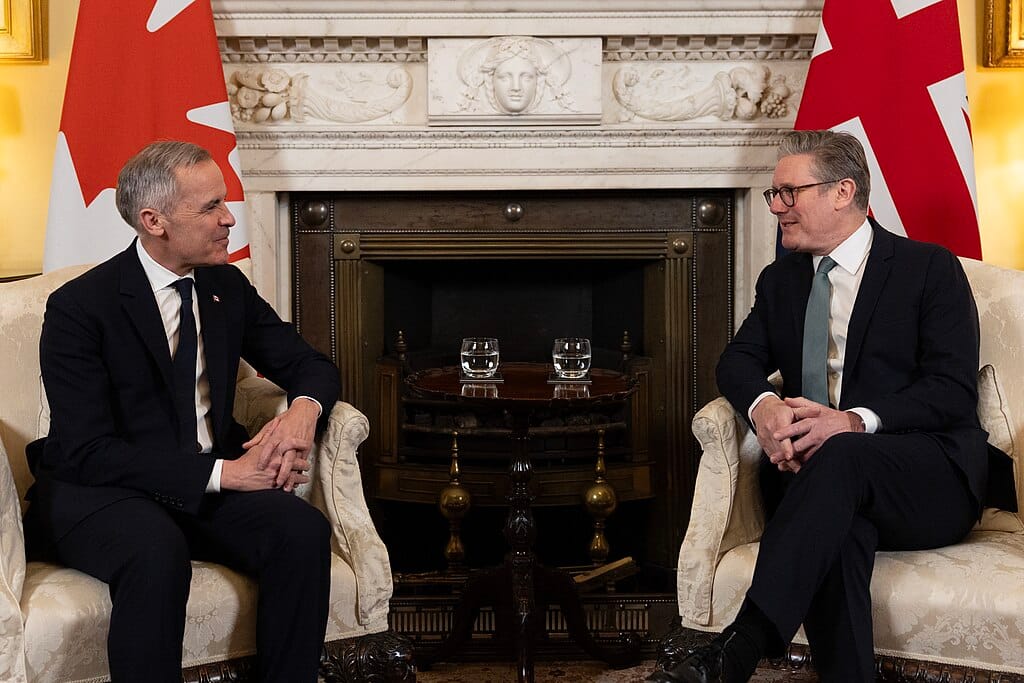Canada Imposes Retaliatory Tariffs on U.S. Autos: A Deepening Trade War

On April 3, 2025, Canadian Prime Minister Mark Carney announced the imposition of 25% retaliatory tariffs on vehicles imported from the United States, mirroring the auto tariffs enacted by U.S. President Donald Trump earlier in the day. The move marks a significant escalation in trade tensions between the two North American neighbors and underscores the growing strain on their historically close economic relationship.
Carney emphasized that Canada’s countermeasures aim to minimize harm to its domestic economy while maximizing pressure on the United States, particularly targeting sectors critical to U.S. manufacturing. The tariffs exclude auto parts to preserve the highly integrated North American supply chain, which is vital to both countries' automotive industries.
Background: Trump’s Auto Tariffs
President Trump’s 25% tariffs on imported vehicles, which took effect at midnight on April 3, are part of his broader "America First" trade agenda. The tariffs apply to all foreign-made cars and trucks entering the U.S., including those from Canada, unless they meet specific exemptions under the U.S.-Mexico-Canada Agreement (USMCA).
Trump justified the tariffs as necessary to protect American jobs and reduce trade imbalances. However, critics argue that the policy will lead to higher consumer prices and disrupt global supply chains. The automotive sector is particularly vulnerable, as it relies heavily on cross-border trade for components and final assembly.
Canada’s Retaliatory Measures
Prime Minister Carney’s response was swift and measured:
- Scope of Tariffs: Canada’s 25% tariffs target non-CUSMA-compliant vehicles imported from the U.S., as well as the non-Canadian content in CUSMA-compliant vehicles.
- Exclusion of Auto Parts: Unlike Trump’s broader approach, Carney excluded auto parts from Canada’s tariffs to avoid further disruptions to the deeply integrated North American auto industry.
- Strategic Response Fund: Carney announced a CA$2 billion (US$1.5 billion) fund to support Canadian auto workers and businesses affected by the tariffs.
Carney stressed that these measures were enacted reluctantly but were necessary to protect Canadian jobs and industries. “Our approach aims to maximize the impact on the United States while minimizing effects on Canada,” he stated during a press conference in Ottawa.
Impact on Canada’s Automotive Industry
Economic Significance
The automotive sector is Canada’s second-largest export industry, employing approximately 125,000 workers directly and nearly 500,000 more in related fields. Ontario alone accounts for 85% of Canada’s vehicle production, with major assembly plants operated by automakers like Stellantis, General Motors, and Ford.
Immediate Fallout
- Stellantis announced it would temporarily close its Windsor assembly plant for two weeks starting April 7 due to anticipated supply chain disruptions caused by Trump’s tariffs. This decision affects approximately 3,600 workers and signals broader challenges for the industry.
- Unifor Local 444 President James Stewart warned that additional scheduling adjustments are likely in the coming weeks as automakers reassess production plans in light of rising costs.
Long-Term Risks
Experts warn that prolonged trade tensions could lead to significant job losses and reduced investment in Canada’s automotive sector. A sustained tariff regime may also force automakers to shift production to other regions with lower costs or fewer trade restrictions.
Economic Implications for Both Countries
For Canada
- Inflationary Pressures: Higher vehicle prices could exacerbate inflation, which remains a concern amid global economic uncertainty.
- Export Challenges: Approximately 85% of vehicles manufactured in Canada are exported to the U.S., making the industry highly vulnerable to American trade policies.
- Limited Diversification Options: Analysts note that Canada’s heavy reliance on the U.S. market leaves it with few immediate alternatives for its automotive exports.
For the United States
- Supply Chain Disruption: Many U.S.-made vehicles rely on Canadian parts that cross the border multiple times during production. Tariffs could increase costs for American manufacturers and consumers alike.
- Economic Backlash: Economists predict that Trump’s auto tariffs could lead to job losses in U.S.-based assembly plants reliant on Canadian components, undermining his stated goal of protecting American workers.
Political Reactions
In Canada
Carney’s decisive response has drawn praise from political allies and industry leaders but has also sparked criticism from opposition parties:
- Ontario Premier Doug Ford described Canada’s tariffs as a “measured response” that balances economic protection with strategic restraint.
- Conservative leader Pierre Poilievre criticized Carney for not taking stronger action earlier, arguing that more aggressive countermeasures could have deterred Trump from implementing his tariffs.
In the United States
The Biden administration has defended Trump’s tariffs as necessary for safeguarding American jobs but has faced pushback from domestic automakers and consumer advocacy groups concerned about rising costs.
Broader Trade Dynamics
The escalating trade dispute highlights deeper shifts in Canada-U.S. relations under Trump’s presidency:
- Erosion of Trust: Carney remarked that “our old relationship of steadily deepening integration with the United States is over,” signaling a fundamental shift in how Canada views its southern neighbor as a trading partner.
- Global Implications: The dispute comes at a time when both countries face challenges from rising protectionism worldwide, complicating efforts to maintain stable supply chains amid geopolitical tensions.
Challenges Ahead
1. Legal Disputes
Canada has filed complaints with the World Trade Organization (WTO), arguing that Trump’s auto tariffs violate international trade rules under USMCA provisions.
2. Economic Fallout
Economists warn that prolonged trade tensions could push Canada into a recession if key industries like automotive manufacturing face sustained disruptions.
3. Political Calculations
With a federal election scheduled for April 28, Carney faces pressure to balance economic protectionism with diplomatic engagement while maintaining public support.
Conclusion
The imposition of retaliatory auto tariffs by Canada marks a turning point in its trade relationship with the United States under President Donald Trump’s administration. While Prime Minister Mark Carney has taken steps to shield Canadian workers and industries from immediate harm, the long-term consequences of this escalating trade war remain uncertain.
As both nations navigate this period of heightened economic nationalism, their ability—or inability—to resolve these disputes will have far-reaching implications for North America’s economic stability and global competitiveness alike. For now, businesses and consumers on both sides of the border must brace for higher costs and continued uncertainty as this trade conflict unfolds further.




